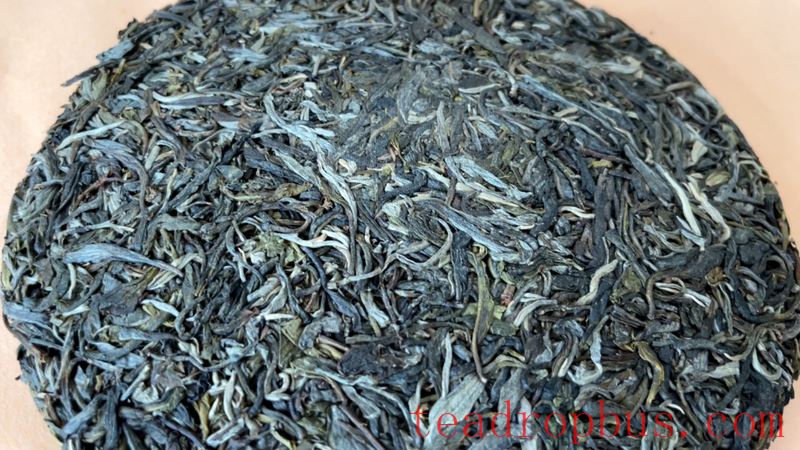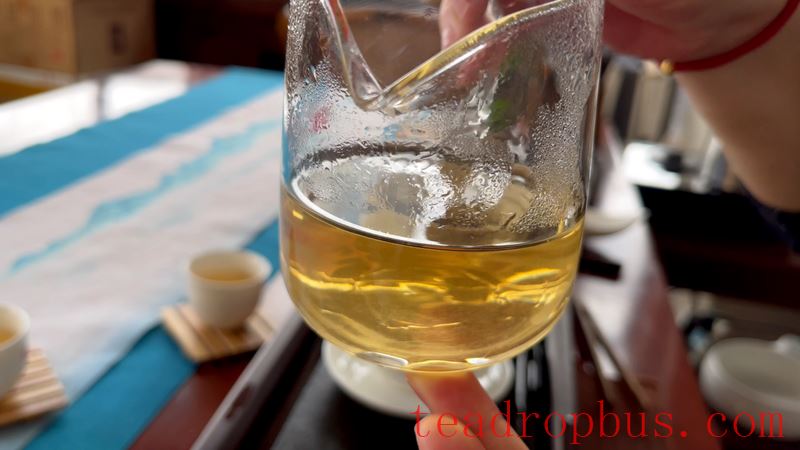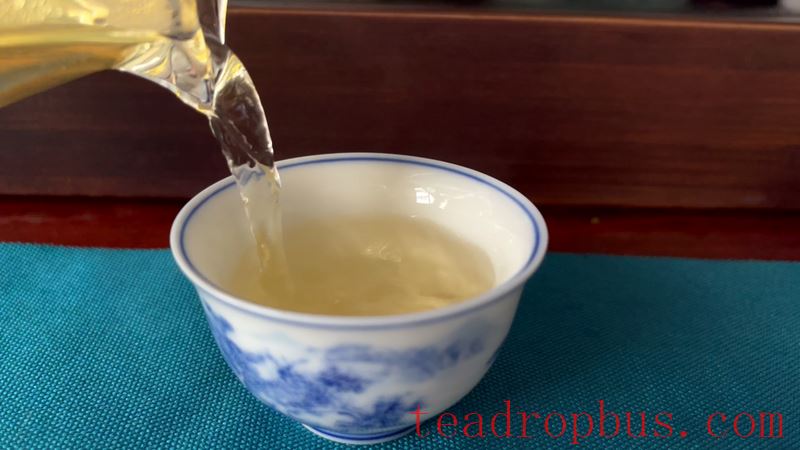Drinking Tea is a green and healthy lifestyle, a natural way to maintain health. Pu'er Tea culture has a long history and has been favored by people since ancient times. When it comes to raw Pu'er tea, how can we determine whether the tea we are drinking for health is good or not? Let's analyze the quality assessment of raw Pu'er tea.
Raw Pu'er tea is made from Yunnan large-leaf sun-dried Green Tea as raw material, without artificial pile fermentation, directly pressed into cakes, bricks, tuos, or stored in loose tea form. This is also the traditional understanding of Pu'er tea.

How to Distinguish the Quality of Raw Pu'er Tea?
Step 1: Examine the Appearance
1. Examine the body of the tea: Is it intact? Are there any other impurities on the surface? Is the appearance uniform?
2. Examine the shape of the tea leaves: Look at the luster, age, thickness, etc. High-quality raw Pu'er tea has a bright color and thick, plump leaves.
Step 2: Smell the Aroma of the Tea
Smell the aroma of the dry tea. Check for any unusual odors. Fresh tea has a grassy scent, a fresh smell that brings to mind grass and sunlight. It is refreshing and you can detect a light, fresh fragrance. For aged tea, there is a unique aged aroma. Judge the tea through smelling it when it's hot, cold, from the cup lid, and the natural aroma emitted by the tea itself. Check if it is pure and natural, free of any strange odors or smoky flavors, and if the aroma is lasting and high-reaching.

Step 3: Observe the Liquor Color and Leaf Base
1. Observe the transparency of the liquor, checking for impurities and floating particles. Good raw Pu'er tea has a clear, bright liquor without any debris. If the liquor is murky with many sediments, it indicates issues with processing techniques and storage environment.
2. Observe the leaf base: Good raw Pu'er tea has neat, well-defined leaves with clear veins and robust stems that do not break easily. The leaf base should be thick and have a distinct texture. When evaluating raw Pu'er tea, focus on the tenderness, color uniformity, leaf quality, integrity, softness, and after finishing tasting, you can gently rub or tear the leaves to check their age, color, softness, the degree of fixation for new tea, and the uniformity of the leaves. After brewing, the leaves of raw Pu'er tea should fully unfurl, with visible veins and teeth.
Step 4: Taste the Tea
Good raw Pu'er tea has a high-reaching aroma, rich flavor, sweet aftertaste, and a full-bodied soup. The bitterness, astringency, sweetness, and other flavors change richly. The longer the aging period, the more layers of taste will develop, such as softness, smoothness, and lingering fragrance. High-quality raw Pu'er tea should never exhibit any uncomfortable sourness, numbness, or mustiness. The higher the quality of the tea, the faster the bitterness and astringency dissipate, the quicker the sweet aftertaste returns, and the more persistent and intense the taste becomes.

To Assess the Quality of Raw Pu'er Tea, Focus on the Following Three Aspects:
(1) The Speed of Salivation is Important
Salivation is easy to induce, and many factors can cause it, so overemphasizing the sensation of salivation can lead to confusion. To accurately experience salivation purely caused by the tea, the scientific approach is to “experience the sensation before salivation occurs,” which is the “dissipation feeling on the tongue.” The time from when the tea enters the mouth until the dissipation feeling appears on the tongue is the speed of salivation, and the faster the speed, the better the quality.
(2) The Thoroughness of the Sweet Aftertaste
Truly high-quality tea, once the sweet aftertaste begins, the bitterness and astringency end. There is no residue on the tongue, and the entire mouth feels very sweet and moist. The integration of the aroma: the ratio of the aroma when smelled and after being drunk. In high-quality young raw Pu'er, the aroma rises from the throat after being swallowed and lasts for a long time, very clear and lingering.

(3) Depth and Persistence of the Throat Feeling
Tea with a deep throat feeling will give an experience where “the feeling in the mouth is less intense than in the throat,” and the sensation in the depths of the throat will last for some time.
Combined with a deep sweet aftertaste and deep aroma source, there will be a stronger feeling in the throat than in the mouth. For tea with a deep throat feeling and short, mild bitterness, a thick soup feel, under certain temperature and concentration conditions, there will be an unusually comfortable warmth in the chest.